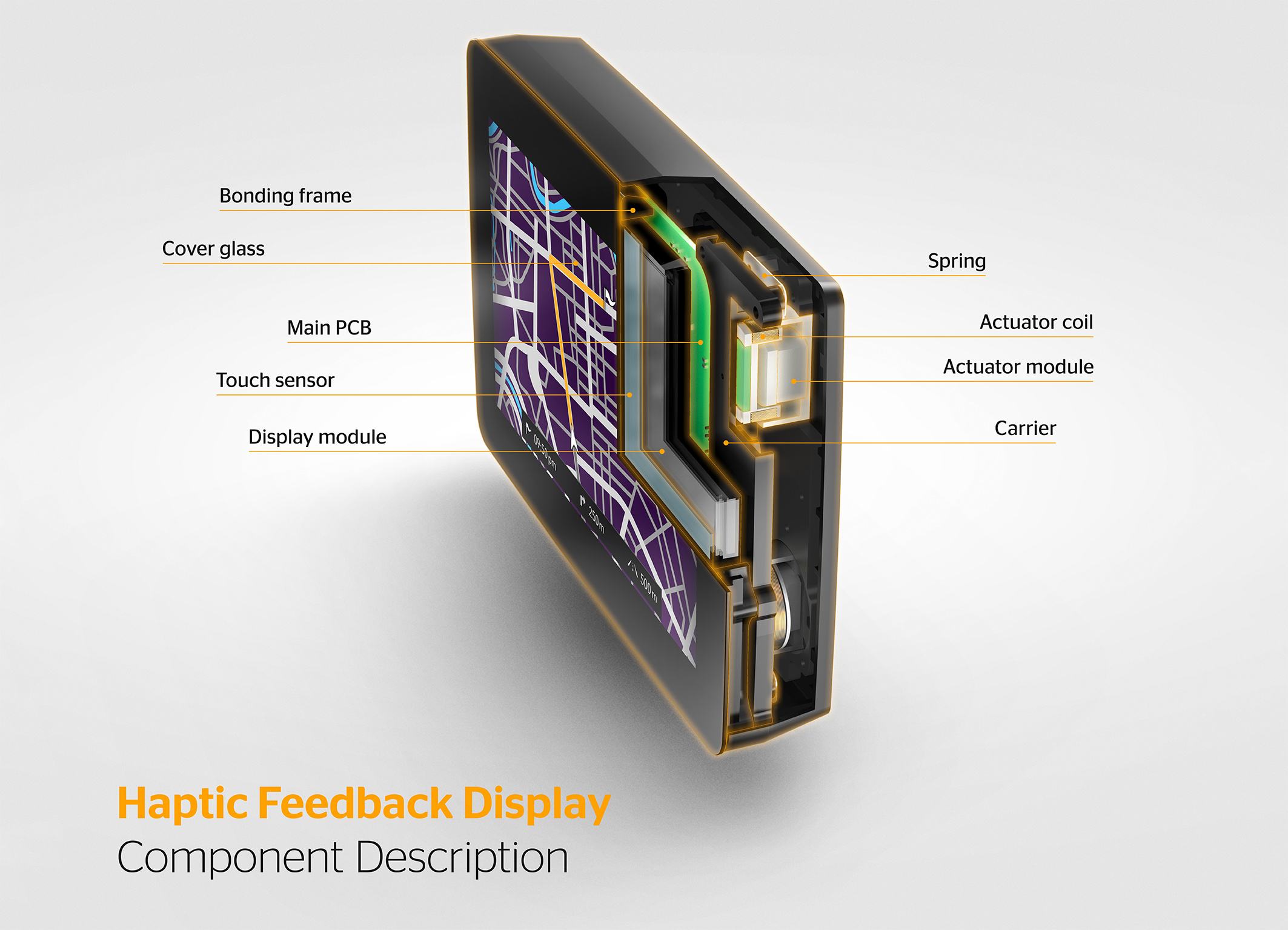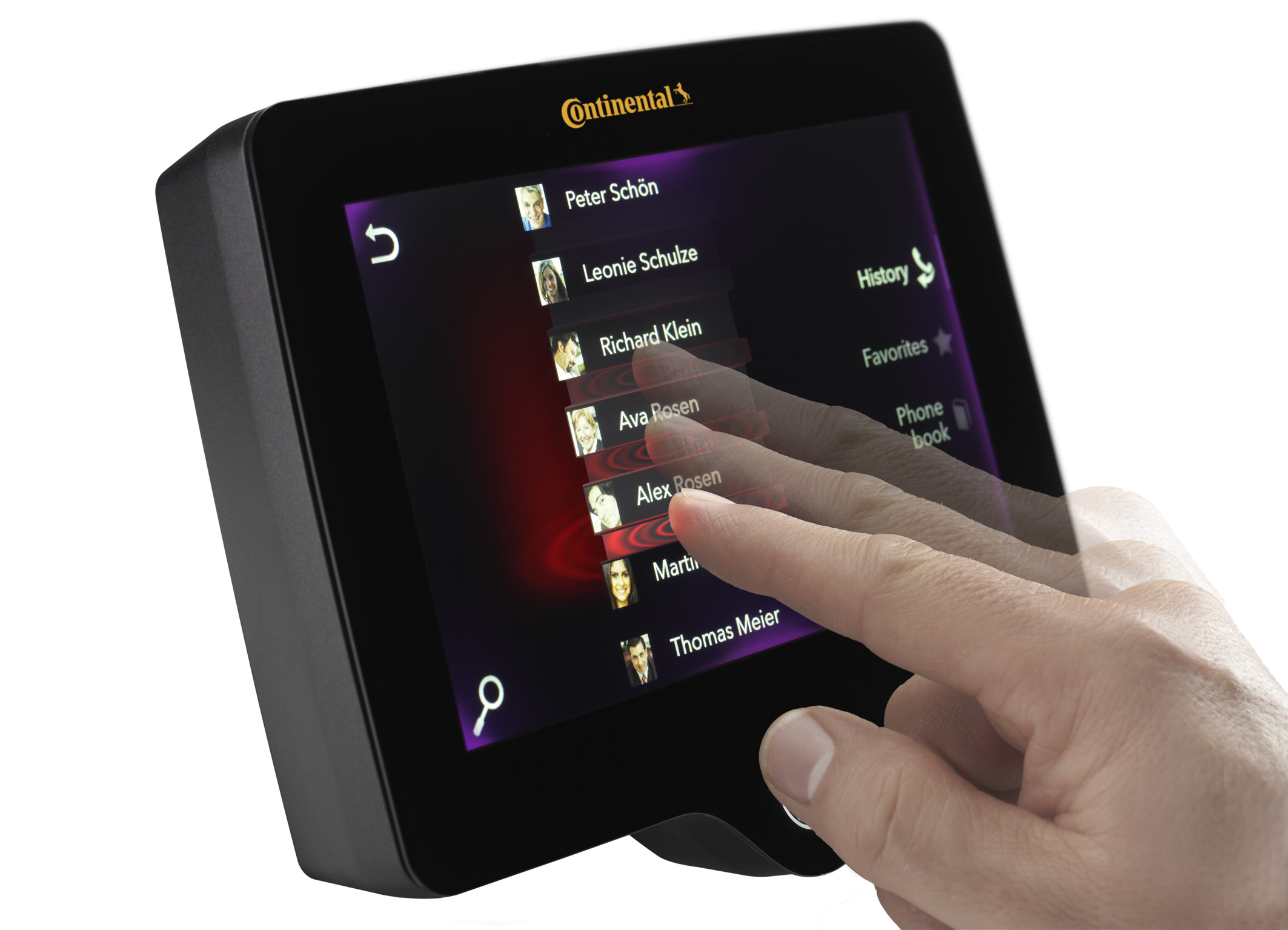Operating touch screens requires some complex hand-eye coordination, which may temporarily distract the driver. To find the desired operating element, select it, and ensure that the intended function has really been triggered, drivers must sometimes divert their attention away from the road for several seconds, and are thus “flying blind” during this time.
With its new active Haptic Feedback Display the automotive supplier Continental now offers a solution to this dilemma. The novelty of it is that this display provides feedback by means of a movement impulse that can be felt through one’s fingers, indicating that the desired operation has been triggered and understood by the system. To be used in vehicles these displays need to fulfill several additional requirements. For example, a finely tuned force recognition (or “force sensing”) ensures that accidental touches can be distinguished from intentional operational commands.
First complete touch screen with haptic feedback
“The active haptic feedback enables us to close the loop between driver, vehicle, and environment,” explains Eelco Spoelder, Head of the Continental business unit Instrumentation and Driver HMI. “The clear advantage is that the driver does not have to change focus or take their eyes off the road, but instead get direct tactile feedback on the touch screen.”
Continental now presents its first complete touch display with haptic feedback as a demonstrator with technology ready for production. It is a touch‑sensitive car-appropriate 8-inch screen (20.3 cm) with an inbuilt haptic actuator system.
The actuators basically consist of an electromagnetic spool with two windings. In certain operating situations, they trigger mechanical feedback that can be clearly felt by the user, whilst at the same time helping to measure the force exerted. They are fitted behind the construction elements of the touch display, and are thus located under the screen’s bonded layers (protective glass, capacitive sensor, display). The conditions for use in vehicles and the basic principle of active haptic feedback require an especially rigid structure of the individual construction elements. The solution presented here can be scaled to larger display sizes depending on vehicle manufacturers´ requirements. An application of the haptic feedback for display sizes of 12.3 inches seems technically possible at present.
The tactile feedback from the display is not visible to the naked eye as a mechanical movement. In fact, the “deflection” is only around a tenth of a millimeter. But as this takes place with very high acceleration, the mechanical impulse generated can be clearly felt by a finger. The feedback always takes place on the entire display area. The characteristics and intensity of the haptic feedback can be freely configured, so that it could be adapted to the brand-specific haptic standards of OEMs. They could also be adapted to a particular driving situation as well as operating situation.
Innovative operating concept with search haptics
The operating concept developed by Continental for its Haptic Feedback Display was specifically designed to allow for tactile feedback. It includes haptic search, an aspect that is important for the reduction of driver distraction. When the driver runs a finger over the display, the haptic feedback provides information about the limitations of operating elements. Among other things this kind of “felt support” allows the user to distinguish between several virtual buttons without having to look at the display.
The Haptic Feedback Display therefore combines the aims of better operating safety while driving with improved user-friendliness by allowing largely “blind” operation. Users receive active haptic feedback in those operating situations in which they expect it.
Continental is already presenting the positive effect of this innovative operating technology today; the Haptic Feedback Display is due to be ready for series production by 2017.
Source: Continental
Romain’s opinion:
I’m afraid that with the emergence of Google and Apple infotainment systems, drivers will be much more distracted than ever. Even if this haptic technology is going to counter-balance the negative effects, I think that much more is needed to avoid an increase of car accidents. Do you think that voice recognition is the solution to driver distraction?




















